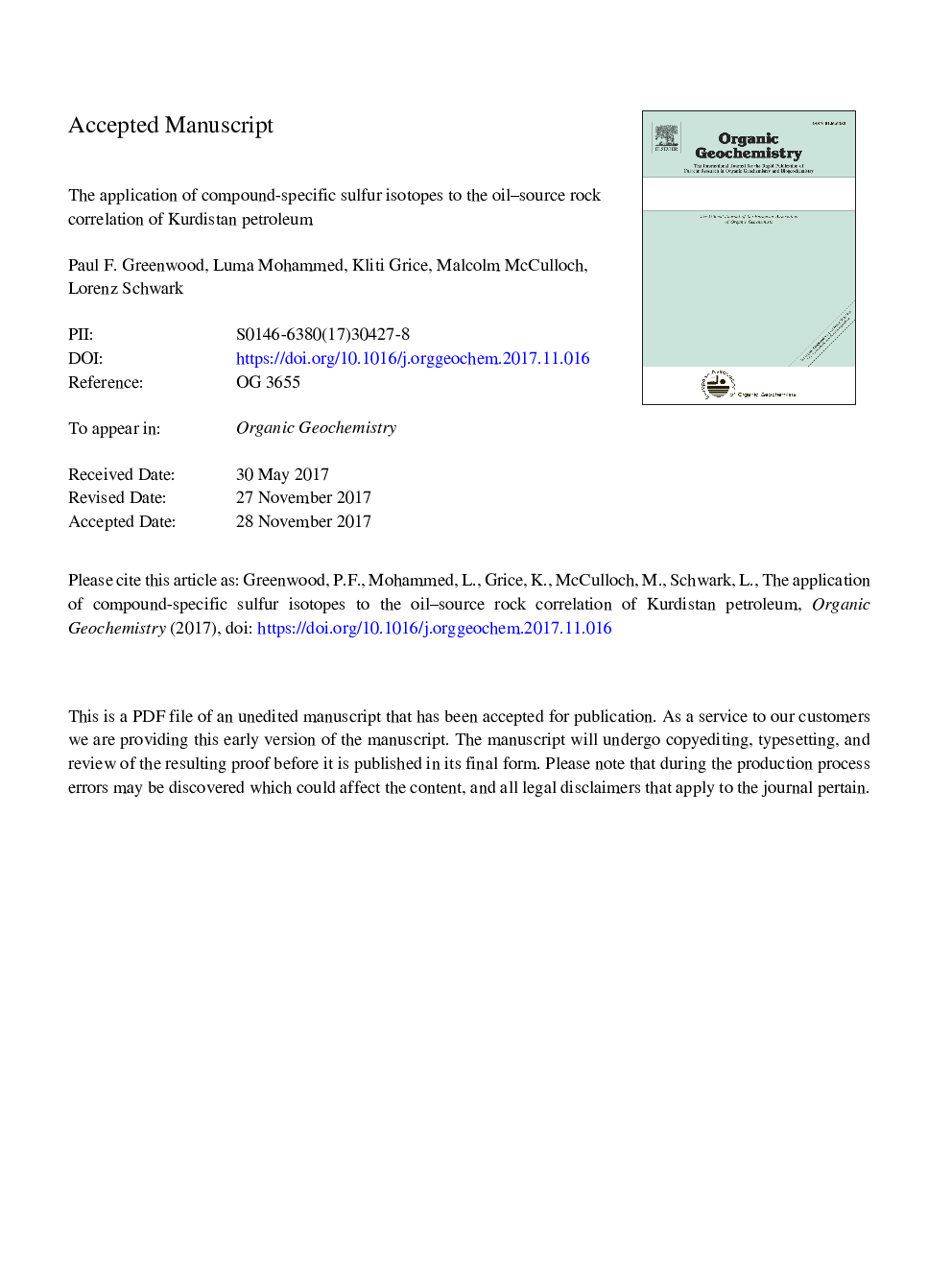| Article ID | Journal | Published Year | Pages | File Type |
|---|---|---|---|---|
| 7817042 | Organic Geochemistry | 2018 | 35 Pages |
Abstract
The concentrations and δ34S values of thioaromatic compounds of a suite of oils from several major oil fields in Kurdistan and their corresponding regional Type II-S source rocks have been measured to investigate their source relationship. The oils of three fields (Khabbaz, Jambur, Ajeel) and the bitumen extracted from specific rock formations (Alan, Sargelu, Naokelekan, Chia Gara) showed particularly high abundances of thioaromatics consistent with a carbonate source deposited in a restricted sulfate-rich marine platform setting. The δ34S [V-CDT] values of the major organosulfur compounds (OSCs) in these petroleum samples were measured with a gas chromatograph coupled to a multi-collector inductively coupled plasma mass spectrometer. δ34S values of dibenzothiophenes and methyldibenzothiophenes were consistently in the range â4â° to â12â° and â9â° to â18â° for the oils and rocks, respectively. Separate groupings of oils and rocks were distinguishable by >â¯2â° difference, given an analytical reproducibility of <â¯0.8â°. OSCs from rocks were consistently â¼2-4â° depleted than in oils, reflecting a similar trend to previous bulk δ34S studies from which an initial evolution of 34S depleted H2S during diagenesis and thermal maturation had been proposed. Distinctive δ34SOSC data of the oils and rocks with particularly high thioaromatic abundances did suggest several oils-source rock relationships: the Ajeel and Jambur oils and sediments from the Chia Gara formation yielded relatively enriched δ34SOSC values, whereas consistently depleted δ34SOSC values were observed for the Khabbaz oil and Naokelekan source rocks. Results suggest that compound-specific S isotope analysis can help establish oil-source rock relationships of S-rich petroleum.
Related Topics
Physical Sciences and Engineering
Chemistry
Organic Chemistry
Authors
Paul F. Greenwood, Luma Mohammed, Kliti Grice, Malcolm McCulloch, Lorenz Schwark,
